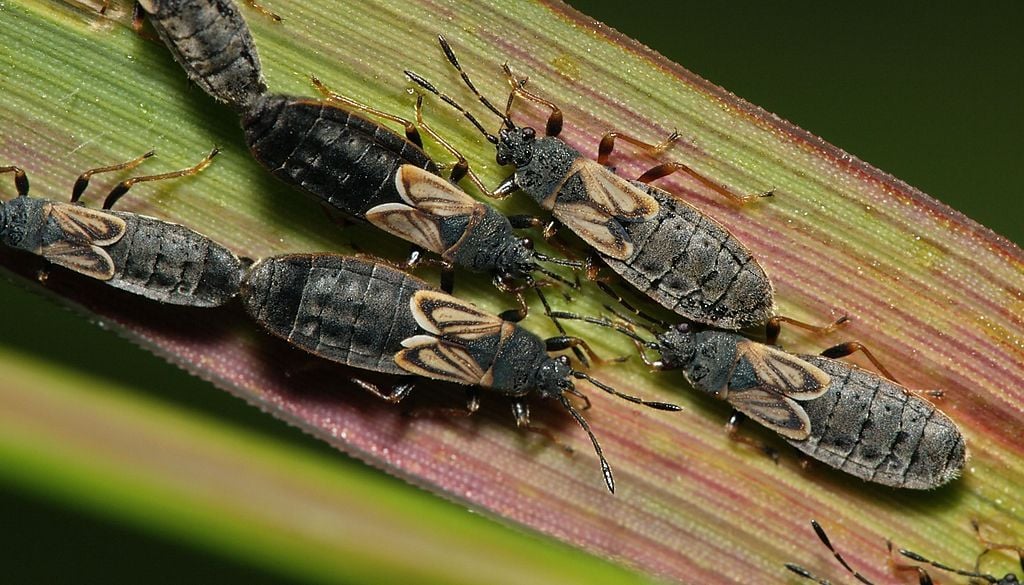
Lawn pests can be one of the biggest frustrations that homeowners face with their healthy and thriving lawns. That’s because you can do everything right—fertilize your lawn, water it regularly, and address any weed problems—and then pests can still come along and damage your turf.
Fortunately, there are solutions.
In this article, we’ll look specifically at chinch bug damage, which is a common problem here in Memphis, TN. We’ll discuss how to tell if you have chinch bugs and also what you can do to get rid of them.
It all boils down to the fact that we want to help you have the most success with your lawn and avoid problems when you can.
Chinch bugs are surface-feeding lawn insects that are “tiny but mighty.” An adult is typically no longer than 1/6 inch.
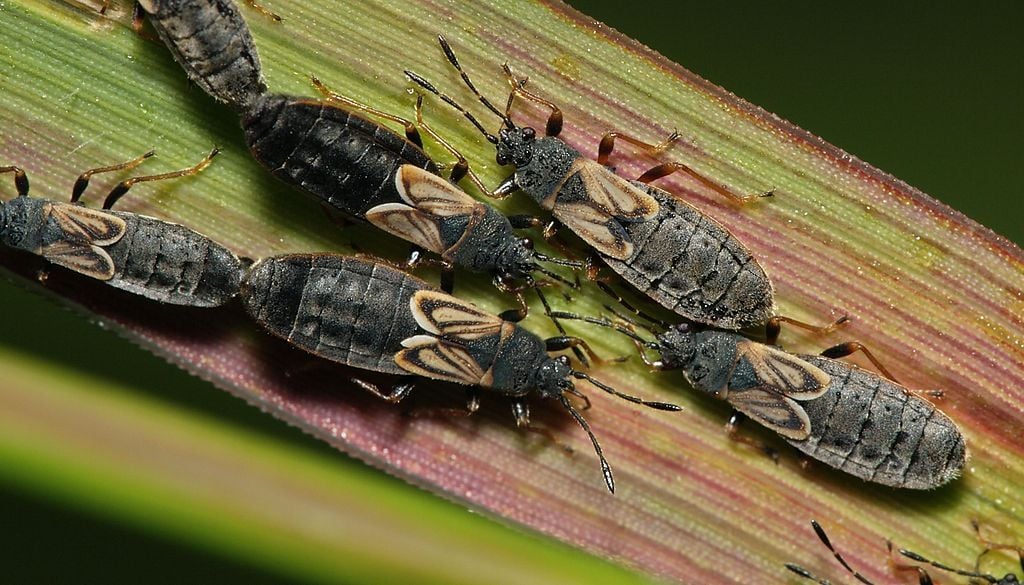
Chinch bugs have blackish-grey bodies with fine hairs and white wings. Their wings have a distinctive triangular mark but because they’re so small, you may never see those details (at least not without a magnifying glass).
The biggest issue with chinch bugs is that they feed on lawns in both the nymph and adult stages. They do this by sucking the fluids out of your grass blades. As this occurs, they also inject a toxin into the grass that will cause it to turn yellow or brown and eventually die.
While you might not spot the actual pests in your lawn, you will likely spot chinch bug damage (which we’ll talk about next). It’s usually the damage that alerts homeowners to a problem. A chinch bug infestation may bring a whopping 200 pests per square foot of turfgrass to your lawn. In these large numbers, they can do a lot of damage to your healthy turf.
One of the biggest problems with chinch bug damage is that it can mimic other problems. To you, your lawn might just look yellowed or even brown in spots. To a lot of homeowners, this indicates that there’s a problem with watering. They might assume their lawn is suffering from drought stress and they need to water it more.
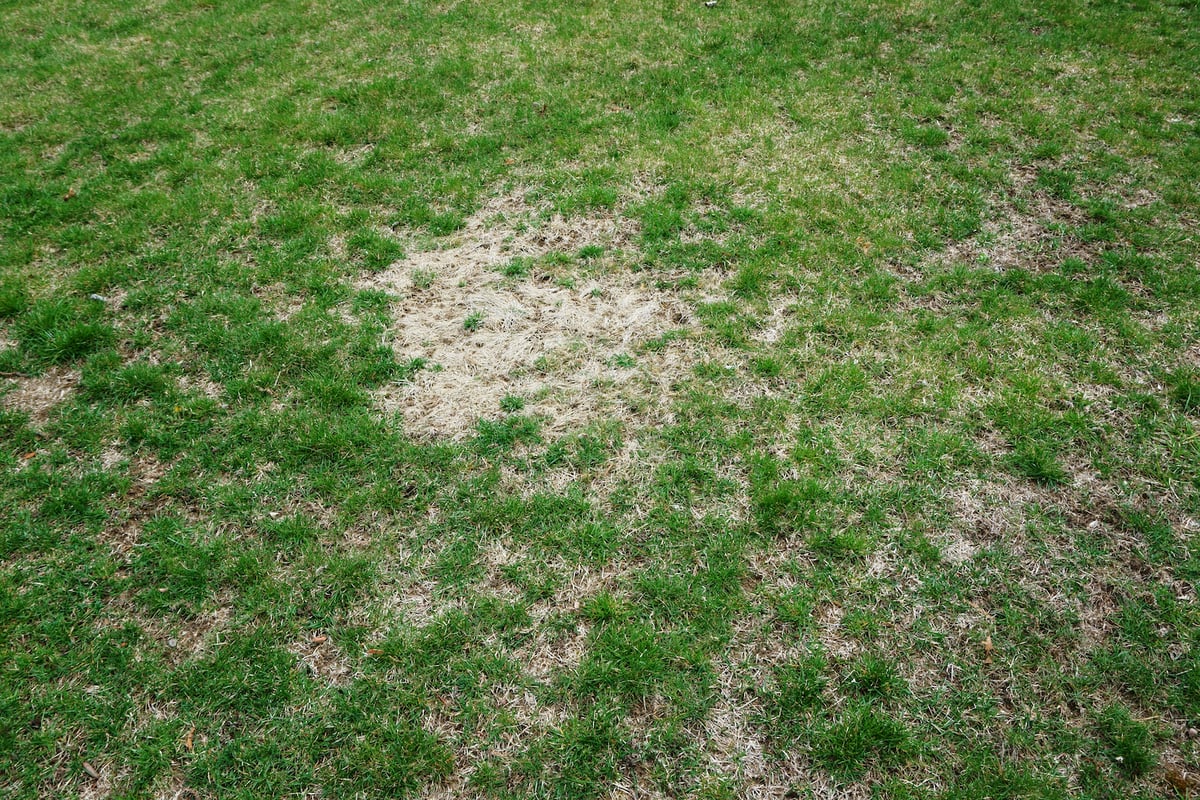
But watering is obviously not going to help a chinch bug problem.
One way that homeowners are alerted to the fact that it’s actually chinch bug damage (not drought), is when watering doesn’t do anything. If your lawn does not start to green back up after watering, you’ll know that it probably wasn’t an issue with drought.
Since chinch bug damage is not easy to identify, you can also do some investigation work to try and determine if it’s a chinch bug issue or some other lawn problem.
If you get down on your hands and knees in the grass, you might be able to spot them. It will help to have a magnifying glass as chinch bugs are pretty tiny (as we mentioned, an adult is only 1/6 inch long!).
Search in the fringe of the grass (where the brown grass borders the still-healthy green grass) as this is where the pests will be lurking.
You can also use the “tin can” or “float test.”
Since these pests are so destructive, you likely also want to know how you can kill chinch bugs.
Early detection is definitely key to successful lawn insect control with any pest (and it’s no different with chinch bugs). When you spot a problem early, you can get it under control quickly.
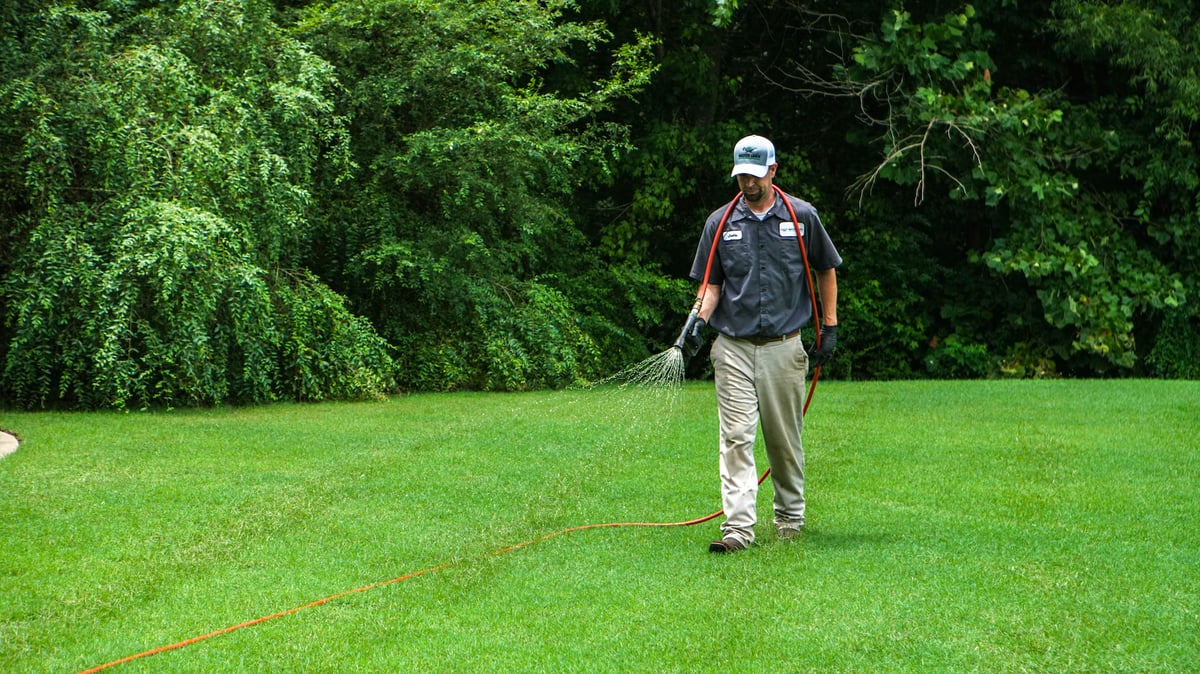
At Master Lawn, we utilize an all-in-one type of product that is both curative and preventative in nature. It will take care of an existing chinch bug problem and also provide you with future protection against another invasion.
But we can’t stress enough how important it is to spot a problem early before your lawn becomes decimated.
We know this puts a lot of pressure on the homeowner—but it doesn’t have to! If you find the right lawn care partner, that responsibility is shared.
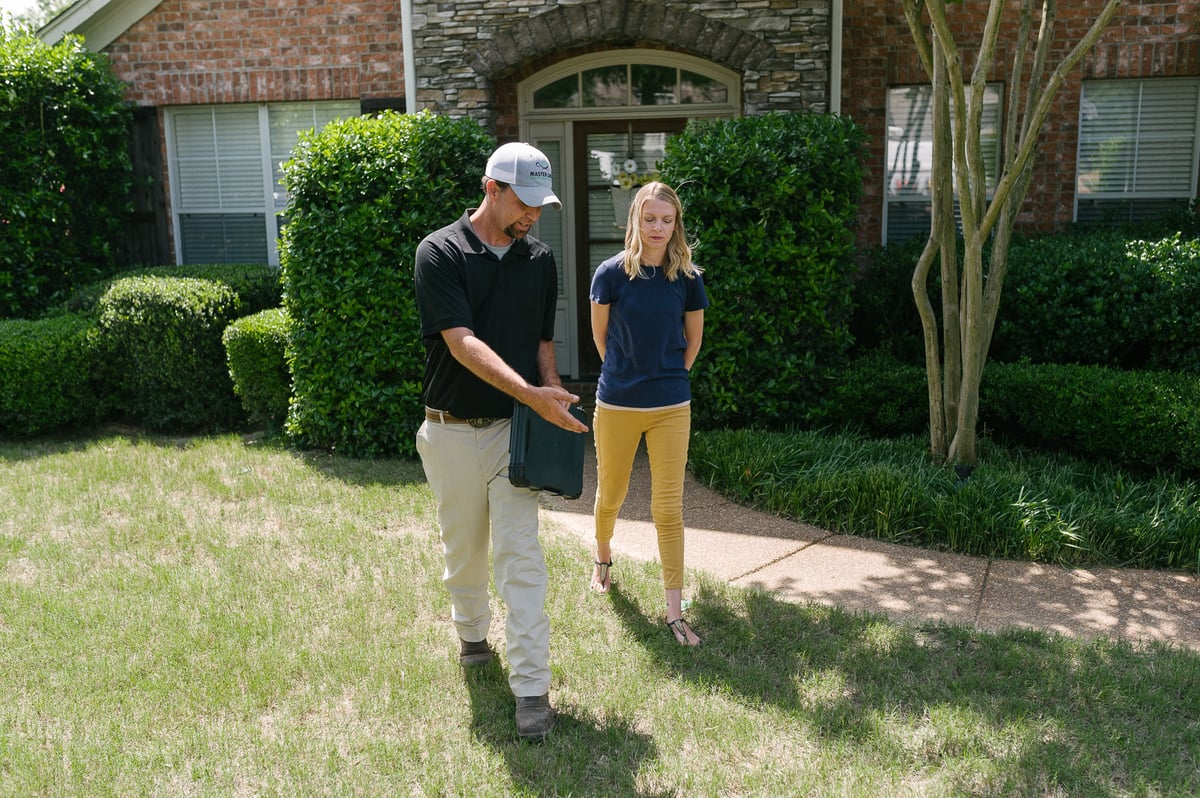
This is one reason why having a lawn care professional visiting your property as part of a lawn care program is beneficial. They’ll notice signs of a problem before you may have even had a chance to.
But if something goes wrong in-between visits and you notice a problem, you’ll also have access to a professional for help with diagnosing what’s going on. At Master Lawn, we always urge our clients to text us if they spot an issue on their lawn. We can help them to diagnose the issue and get the proper solution underway. Whether it’s how to get rid of chinch bugs in your lawn—or something else entirely—we can help.
In some cases, there is chinch bug damage that needs to be repaired.
As we mentioned, a chinch bug problem isn’t usually spotted until after some damage has already been done, so you may need to do a little repair work (particularly if your lawn turned brown and died in areas).
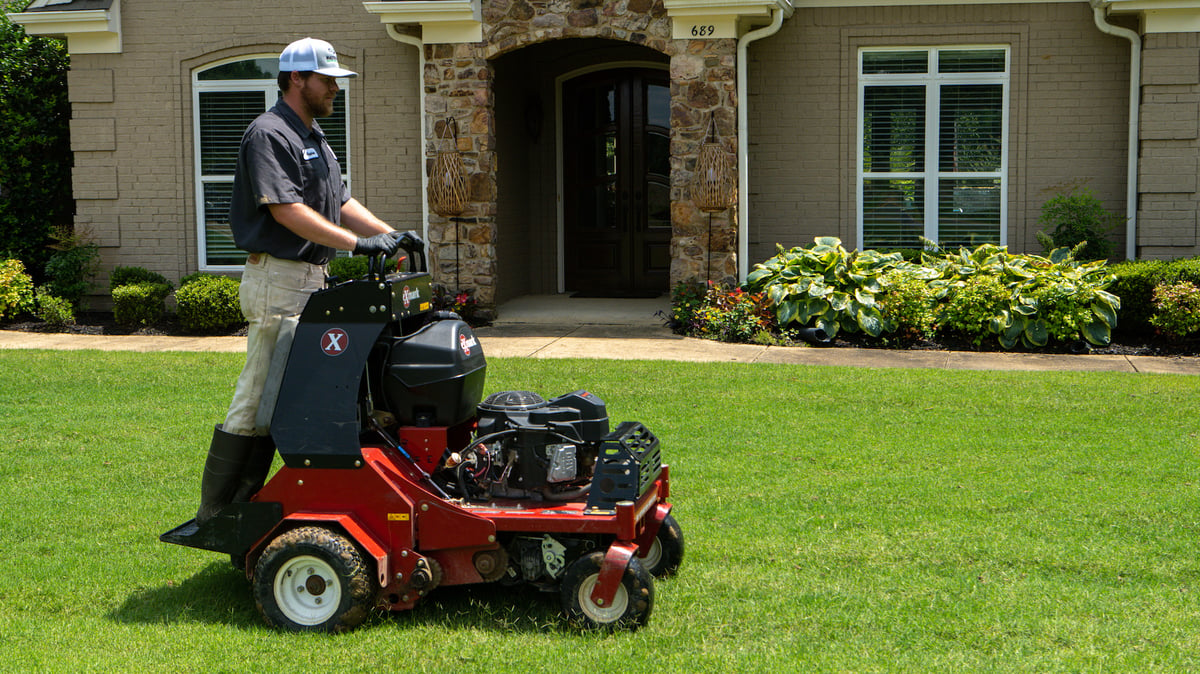
Lawn aeration and overseeding can do wonders in areas where your lawn suffered from chinch bug damage.
At the end of the day, the hope is to prevent as many of these issues as you can. While some pest problems are unavoidable, spotting them early will make a world of difference in terms of how your lawn fares.
On top of that, implementing a lawn care program that helps to produce a thick and healthy lawn will also help you to resist pests naturally. When your lawn is already thinned out and struggling, any damage from insects is really going to show (and your lawn problems will only seem to compound).
Along with that, you should know that a thick layer of thatch can actually attract chinch bugs. So, to prevent these pests in the first place, keeping that thatch layer in check is important.
When you take these steps, you can be successful in maintaining a healthy and thriving lawn, even when there are pests out there that try to destroy it!
You can stop bugs from eating your grass by partnering with a professional who will have your back. At Master Lawn, we want you to be able to feel confident in knowing we will help get your pest problem (or any other issues that arises) under control before it gets serious. Instead of worrying about bugs causing you trouble, you can get back to enjoying your lawn to the fullest.
Want to feel confident that lawn insects won’t destroy your Memphis, TN lawn? Talk to a lawn care expert, choose from 3 program options, and become the master of your lawn.
Image Source: Cinch bugs
Michael Hatcher is Founder / Chairman of Michael Hatcher & Associates.
These Stories on Lawn Care
8255 Center Hill Rd
Olive Branch, MS 38654
8164 MS-178
Olive Branch, MS 38654
Phone: (901) 445-9336
Fax: (901) 853-7353
Copyright © Master Lawn | All Rights Reserved.